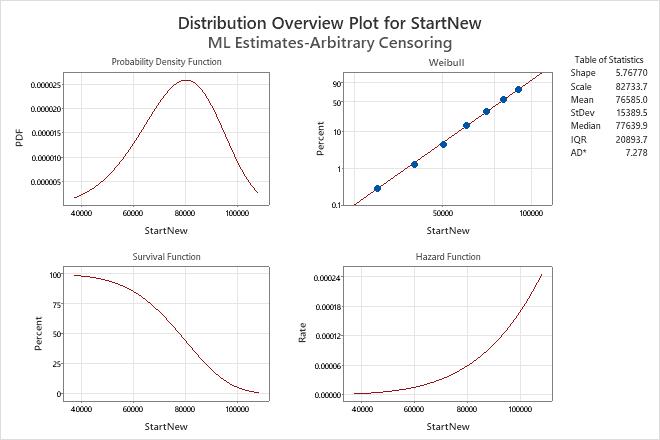The probability density function is located in the upper right corner of the distribution overview plot.
Use the probability plot to assess how well the chosen distribution fits your data. If the points follow the fitted line, then it is reasonable to use that distribution to model the data.
The points on the plot are the estimated percentiles based on a nonparametric method. When you hold your pointer over a data point, Minitab displays the observed failure time and the estimated cumulative probability.
The line is based on the fitted distribution. When you hold your pointer over the fitted line, Minitab displays a table of percentiles for various percents.
The Anderson-Darling (adj) statistic measures the fit of the distribution. Substantially smaller Anderson-Darling values generally indicate that the distribution fits the data better. However, slight differences may not be practically relevant. In addition, values calculated for different distributions may not be directly comparable. Therefore, you should also use the probability plot and other information to evaluate the distribution fit.
If you use the alternative estimation method—the least squares (LSXY) method— Minitab displays a Pearson correlation coefficient. The correlation coefficient is a positive number that can be no greater than one. Higher correlation coefficient values generally indicate that the distribution provides a better fit.
Example output

Interpretation
For the muffler data, the fitted line is based on a Weibull distribution with shape = 5.76770 and scale = 82733.7.
In this example, the data appear to hug the fitted line well; therefore the Weibull distribution may be an appropriate choice for the data.
